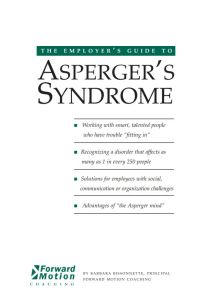Join getAbstract to access the summary!

Join getAbstract to access the summary!
Barbara Bissonnette
The Employer’s Guide to Asperger’s Syndrome
Antioch University, 2007
What's inside?
Employees with high-functioning autism are missing out on their full potential at work – but you can help.
Recommendation
The 16-year-old environmental activist Greta Thunberg recently called Asperger’s syndrome her “superpower.” She’s among a growing number of people who see high-functioning autism not as a disorder, but as a source of strength. According to Forward Motion Coaching principal Barbara Bissonnette, for instance, workers with high-functioning autism can bring unrivaled expertise and quality to their work – if their workplaces support them properly. (Bissonnette discusses Asperger’s, but keep in mind that US mental health experts haven’t used that term as a separate diagnosis from other autism spectrum disorders since 2013.)
Summary
About the Author
As a principal of Forward Motion Coaching, Barbara Bissonnette teaches workers and organizations how to handle issues surrounding high-functioning autism in the workplace.


















Comment on this summary